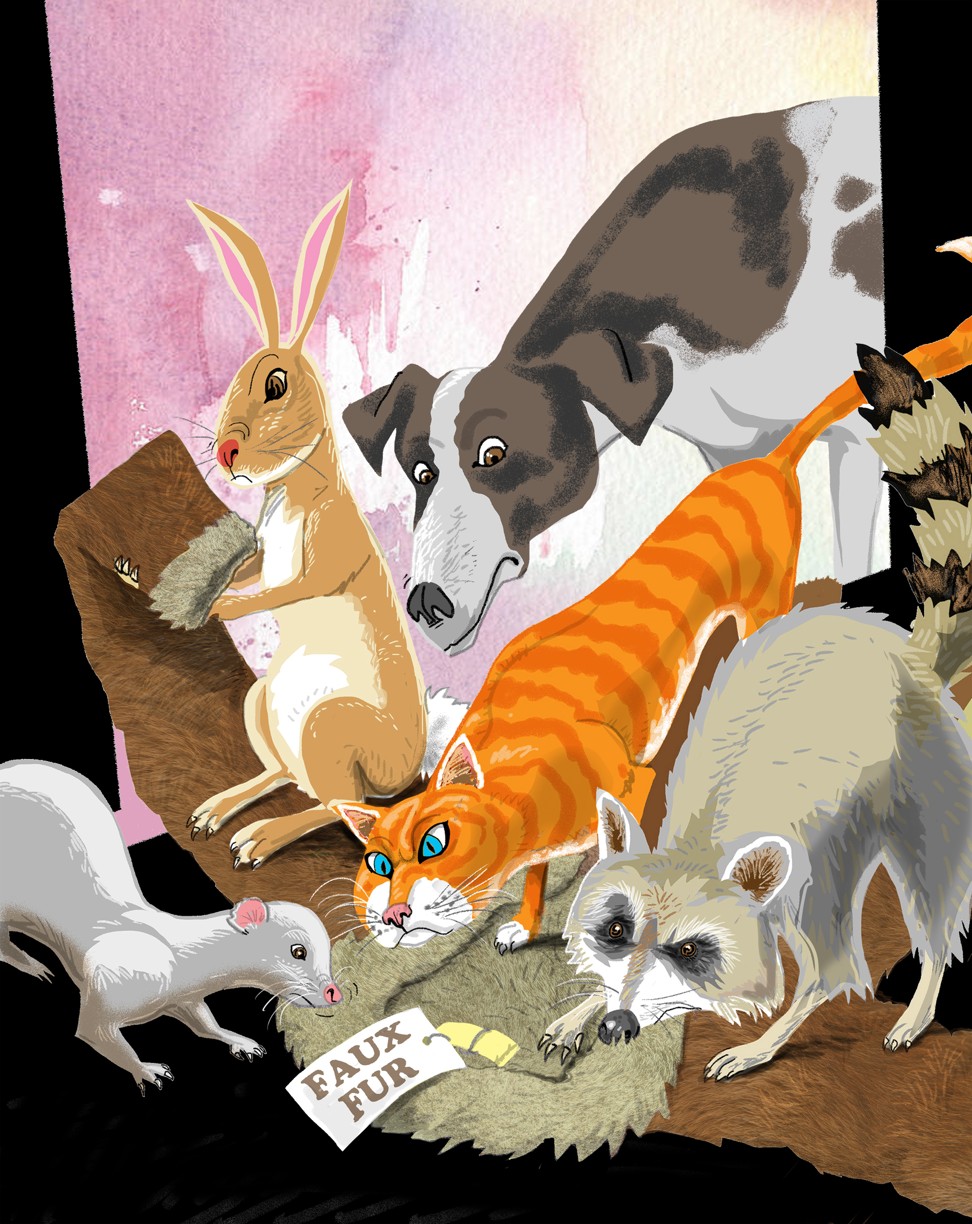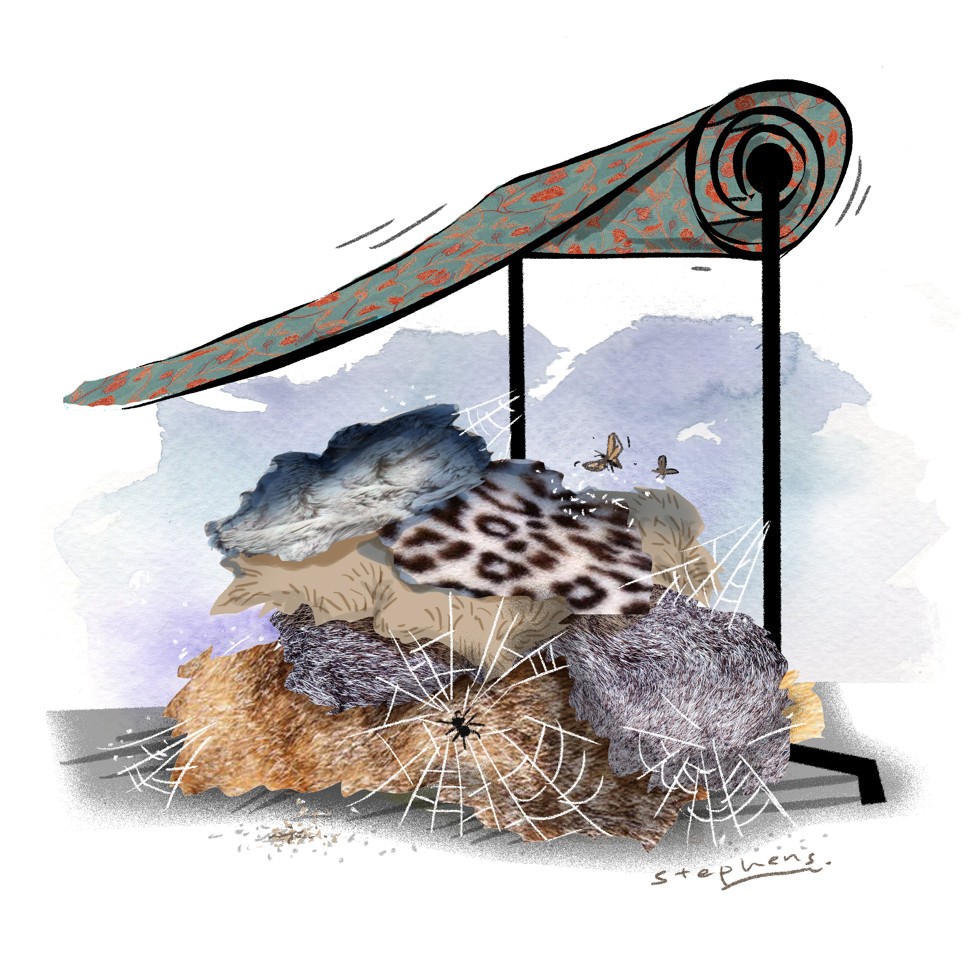Fake fur or real - do labels lie?

As far as fashion goes, it might seem that the fur debate is won.
“Things are changing around the world now, even in markets [that have traditionally been the biggest consumers of real fur] like China,” notes Yvonne Taylor, director of group corporate projects for the animal welfare campaign group PETA (People for the Ethical Treatment of Animals). “The fact is that when the likes of Gucci say it will not use fur any more, that makes headlines all around the world.”
And Gucci is by no means the only super-glossy fashion brand to have finally come out against the use of fur, given what many, if not all, identify as the clarity of the moral argument against it. Michael Kors and Versace are also among the big names to have, over the last year, committed to going fur-free. The recent London Fashion Week event was the first to have no fur of any kind at all.
And yet now there is another spin to the story – the revelation that, according to a report by the Humane Society International, the faux fur you might be happy to wear is all too often made of real fur, typically raccoon, dog, rabbit, mink or cat. Its investigation found this to be the case with products from high-street shops, but more prevalently from online retailers, including Amazon and Etsy.
The reasons for this are threefold. There’s the lack of welfare regulations in China, the world’s biggest fur exporter, but also where so much of the world’s clothing, of all qualities, is now made. The oversupply of real fur sometimes makes its use more cost-efficient to use than the fake variety – real fur isn’t, as it’s often perceived as being, an expensive product any more, leading consumers to readily conclude that, say, a fur trim on a cheap coat must be faux. And then there is inadequate labelling, at least across the EU: a regulation enacted in 2011 to clearly label any textile product if it has parts of animal origin is widely ignored.
“Often the retailers in question do not know that the faux fur they’re selling is actually real – it’s someone else along the supply chain who’s being dishonest,” explains Harriet Barclay, the Humane Society International’s campaigns manager. “But, of course, companies are free to put proper checks in place and haven’t done so.”
Consumers should also pay more attention: is the fur stitched into its base, or are follicles visible?
This muddying of the waters is believed to be so widespread that, to bring clarity – and, for those authorities that have already banned fur farming, consistency – outright bans on fur sales look to be in the offing. Los Angeles, West Hollywood and San Francisco have already brought in a citywide ban. The British government is now recommending a public consultation on doing so nationally, and last year India introduced an import ban, while Israel is considering it.
“We can see such changes happening further afield, too – much as there was a ripple effect with the ban on fur farming,” says Barclay.
“The fact is that furriers are facing a dying industry,” argues PETA’s Taylor, “so they’re getting more creative with fur – cutting into it, dyeing it – basically making it look more like faux fur. And that is adding to the confusion, especially in countries like China and Russia, where there’s not the same level of awareness of the cruelty involved in fur farming. But attitudes are changing, and [we’re] seeing a move away from fur of any kind.”
This, it’s argued, is in large part a product of a shifting consumer mindset, notably of the more socially-minded millennials and Generation Z, who are set to become core consumers for high-end fashion labels. These companies, in turn, are having to get in line with the thinking and outspokenness of this newly powerful customer base.
“There’s also been a real change of late in attitudes to fur in large part down to social media,” argues Barclay. “It’s given the ability to share images of fur farms in action, and that is made consumers much more aware.”
Certainly the fur industry is fighting back. There is, for example, the questioning of the assumed ethical credentials of faux fur, which is widely used on clothing for adults and even babies. It suggests that the environmental impact of faux fur is greater than that of “natural” fur – though this argument, as Taylor points out, assumes there’s something natural about raising and killing an animal for its skin.
The claim is made that much faux fur – something of a catch-all phrase for a product actually made of diverse textiles, including sustainable ones – is made of non-renewable, petroleum-based products like nylon, acrylic and polyester, according to the International Fur Trade Federation.
Given that faux fur is, historically at least, used on short lifespan, fast fashion items (the manufacture of which entails other ethical considerations as well, of course), these then risk ending up in landfills.
Real furs, on the other hand, are passed on. Yet these – even those vegetable-dyed and tanned using non-toxic methods – are often chemically treated with ammonia, chromium or formaldehyde to prevent degradation. “In our view, real fur is much more sustainable than the artificial kind,” says Paul Stockall, director of standards and sustainability for the International Fur Trade Federation (IFTF).
The federation has commissioned a poll that reveals 50 per cent of respondents have a more favourable view of real fur once they understand the environmental impact of the faux kind; the results of a carbon footprint study it has commissioned should be known by the end of this year. “The consumer is trying to make some kind of ethical decision regarding whether to buy real or faux fur, but often they do not understand the impact as a whole because the environmental message is a relatively new one.”
Add in other perspectives – wild-caught fur is a product of the necessary management of the populations of other animals, for example, while other furred species are invasive – and it’s small wonder that for some the wider world of fur, encompassing real and faux has become a grey area again. Killing animals for vanity may not be ethically defensible, but animal welfare in the meat industry is considerably worse; faux fur may be a better alternative, but, chosen poorly, it’s not without its downsides.
Perhaps the bigger question is whether fur has simply had its day. There are, after all, plenty of technical fabrics now offering superior functionality, if that is the aim. As for the aesthetic, the connotations of fur have become so loaded that maybe – like spats, ruffs and leg warmers – it’s just one of those things fashion should now leave in the past. The only solution for socially conscious consumers might be to avoid all fur, real and faux – for different reasons, but to the same positive ends. And, in time, that is just the kind of thing millennials and Generations Z-ers could well be expected to do.

More luxury brands are jumping on the ‘no fur’ bandwagon, but fur supporters claim it has less environmental impact than faux fur

